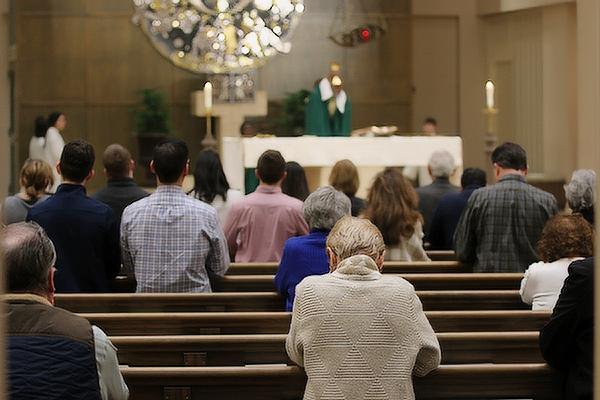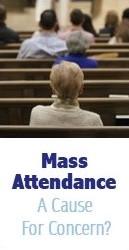

Mass attendance in Arkansas has bounced back since the outbreak of the COVID-19 pandemic, but there are some long-term trends that continue to be concerning for the Diocese of Little Rock.
In October, 45,855 people attended weekend Masses across the state, according to figures released by the diocese. That is a 51-percent increase from October 2020 when just 30,427 attended services in the middle of the pandemic. However, the 2022 figure is an 11-percent decrease from 2019, the year before the pandemic, and a decrease of 23 percent since 2010.
In other words, more than one in 10 people have not returned to Mass in Arkansas after the pandemic and nearly one in four have stopped attending Church compared to 2010.
“These numbers should be a wake-up call to all Catholics in Arkansas: the bishop, clergy, and laity,” said Father John Antony, pastor of Immaculate Conception Church in Fort Smith and Our Lady of the Ozarks Shrine in Winslow. “The Eucharist is the source and summit of our faith, and it should likewise be the same for our week. If fewer people are finding the Eucharist meaningful, then we have a very serious problem on our hands. Dwindling Mass attendance numbers is a very serious concern. It seems we all have dropped the ball and have some share of the blame.”
While Bishop Anthony B. Taylor, Arkansas’ religious and laity who regularly attend church have noticed the flock has thinned, putting Mass attendance numbers in black and white has caused quite a reaction.
“We are going in the wrong direction, and it's a long-term trend, over 10-plus years,” Jeff Hines, director of the diocese’s Faith Formation Office, said. “The challenge is how to reverse it. It's going to take a long-term response, likely 10-plus years.”
Beginning in 2010, Bishop Taylor instituted annual October Mass attendance counts across the state. Since then, attendance rates have dropped in all but four years.
Catholics make up approximately 4 percent of the state’s population, meaning there are a little more than 120,400 in Arkansas.
The declines in Mass attendance would be much more palatable if the state’s population was dropping, but it has increased from 2.92 million in 2010 to 3.01 million in 2020, according to the U. S. Census Bureau. Without that influx of people, many of whom are Catholic, the situation in Arkansas could be much worse.
“One of the things that the numbers don't show, which actually is even more negative, is that during this period of time, we have had people moving into Arkansas, and they almost always come from parts of the country and the world that are more Catholic than us,” Bishop Taylor said. “And even with these new people coming in, our numbers were still going down, so that would suggest that had these new people not moved in our numbers would be even worse than they appear.”
Bishop Taylor said the diocese’s Spanish-speaking numbers have remained stable over the 12-year period, but English-speaking Catholics, especially young adults “are not continuing with the practice of the faith to the same degree as before.”
Diocesan officials said lower Mass attendance is a multifaceted problem globally. In the past, many people came to Mass out of a sense of obligation or duty, Hines said.
“That's gone,” he said. “We relied on a person going to Mass because they were taught as a child that it is their duty, responsibility and obligation. That's not going to work anymore.”
Liz Tingquist, director of the diocese’s Youth Ministry and Campus Ministry offices, works on the front lines of faith formation with teens and young adults.
“The LGBTQ+ issue is huge,” she said. “So many people have in some way been affected through either knowing someone who identifies with this or having a family member who identifies in this way.”
Others, she said, have never gone deep into their faith, so they don’t continue to practice it when they are old enough to make that decision on their own.
Competition from other denominations has also left a mark.
“Some have left for churches that are perceived as ‘more fun.’ By this, I mean that the worship is high energy with great music, et cetera. In the Catholic Church, we come to worship Jesus, not to be entertained.”
Father Antony agreed that American culture is obsessed with entertainment and said the explosion in non-denominational churches has also likely led to a decrease in Mass attendance.
“Sadly, Catholics are not immune from that obsession,” he said.
Diocesan officials said the decision to switch from in-person to online Masses during the pandemic exacerbated the trend of declining Mass attendance.
“Having Mass virtually gave people permission to do other things with their time,” Bishop Taylor said. “They could watch Mass in their pajamas or while they're doing something else. Of course, they were not receiving the Eucharist. Soon, they were no longer missing receiving the Eucharist. When in-person Masses resumed, some people had already filled that time with other things. Going to church was not a priority for them, and it led to discontinuing practice.”
Father Andrew Hart, JCL, theological consultant to Arkansas Catholic and adjutant judicial vicar for the Diocese of Little Rock Tribunal, said even though it appears we have nearly rebounded from the pandemic, it is still impacting us.
“I think we are still feeling the effects of the pandemic and learning from them, and that will continue for a while,” he said. “We went through a traumatic experience as a society, and a lot of people experienced even more trauma at the personal and family level. For some, that has led them back to the practice of the faith after many years away. But clearly, there are also some who have left or who just drifted away. I think it’s incumbent on all of us — not just priests and pastors — to reach out to them, tell them why we continued to value the practice of our faith and to welcome them to join us.”
Increasing Mass attendance will mean changing its current culture, officials said. They point to Pope Francis’ focus of journeying together through the Synod of Synodality, the national Eucharistic Revival and improving diocesan and parish faith formation as ways the Church is adapting.
“As unsure, initially, as I was about the listening sessions for the Synod, I believe now that this will help the Church attract people to the faith and improve attendance at Mass,” Father Luke Womack, pastor of Our Lady of Fatima in Benton, said. “I believe Bishop Taylor’s document on the findings of the listening sessions provide good questions to pose to each parish to get people back to Mass. Encouraging parishioners to come back and taking the time to listen to them and their story will help. If they have a sense that the church authentically cares about them and for them then, they will come back.”
Hines said the Church needs to further develop its culture of evangelization.
“We're all called to share in one way or another, and we're just not doing very well,” he said. “It is going to take time, a clear vision, and repetition of the message. We 120,000 Catholics cannot sit back and say, ‘The bishop or our priest is going to take care of it.’ It's a problem that didn't happen immediately, and it's going to take all of us, over a period of years, to correct it.”
Father Juan Guido, pastor of Christ the King Church in Little Rock and St. Francis of Assisi Church in Little Italy, said the laity needs to have an increased role in creating personal connections within their churches. He said an individual simply inviting a friend or a family to attend Mass with them can have a profound impact.
“We need to give a personal invitation, like Christ did, and improve our hospitality” he said. "People come to the Church when they have personal relationships and feel that they belong. That personal encounter is how we can make the Church grow.”
Father Joseph de Orbegozo, rector of the Cathedral of St. Andrew in Little Rock, said Catholics need to come together and work collaboratively to restore and build the faith.
“(This provides) an opportunity to all of us in the diocese, especially to remember that the Church grows and decreases throughout the years, and that what will matter most will be our willingness to both recommit to our faith and grow in willingness to evangelize,” he said. “Change allows for new pathways of bringing the faith to people. We have the message of Christ which is good, true and beautiful and the call to be wise in how we present it. That is exciting.”
October 2010-October 2022
All parishes are asked to count attendance at every October weekend Mass, figure an average for one weekend and report their findings to the bishop’s office.
Year Attendance % change from previous year % change since 2010
2010 59,581 --- ---
2011 55,807 -6.3 -6.3
2012 53,749 -3.7 -9.8
2013 54,946 2.2 -7.8
2014 55,853 1.7 -6.3
2015 55,625 -0.4 -6.6
2016 53,920 -3.1 -9.5
2017 53,094 -1.5 -10.9
2018 52,638 -0.9 -11.7
2019 51,433 -2.3 -13.7
2020 30,427 -40.9 -48.9
2021 40,823 34.2 -31.5
2022 45,855 12.3 -23
Source: Diocese of Little Rock
Read part 2 in the Feb. 25 issue of Arkansas Catholic.
Please read our Comments Policy before posting.
Article comments powered by Disqus Winning directory photo honors Our Lady of Guadalupe
Winning directory photo honors Our Lady of Guadalupe
 St. Timothy winner recommends adoration to other teens
St. Timothy winner recommends adoration to other teens
 Teens learn value of saints, Eucharist at convention
Teens learn value of saints, Eucharist at convention
 Catholic communities preparing for total solar eclipse
Catholic communities preparing for total solar eclipse
 Vatican groups study important issues raised at synod
Vatican groups study important issues raised at synod
 Studio 3:16 offers new approach to teaching religion
Studio 3:16 offers new approach to teaching religion
 After three decades, NLR principal plans to retire
After three decades, NLR principal plans to retire
 CHS athlete overcomes odds to reach collegiate goal
CHS athlete overcomes odds to reach collegiate goal
 John Calipari: UA basketball coach and devout Catholic
John Calipari: UA basketball coach and devout Catholic
 'Cabrini' film tells story of saint with great faith
'Cabrini' film tells story of saint with great faith
 St. Joseph a model of solidarity with immigrants
St. Joseph a model of solidarity with immigrants
 Two gifts after Jesus’ death: Virgin Mary and Eucharist
Two gifts after Jesus’ death: Virgin Mary and Eucharist
 Why we have an altar, and not just a communion table
Why we have an altar, and not just a communion table
 Pope: Wars should be resolved through nonviolence
Pope: Wars should be resolved through nonviolence
 Living relationship with Jesus Christ in the Eucharist
Living relationship with Jesus Christ in the Eucharist